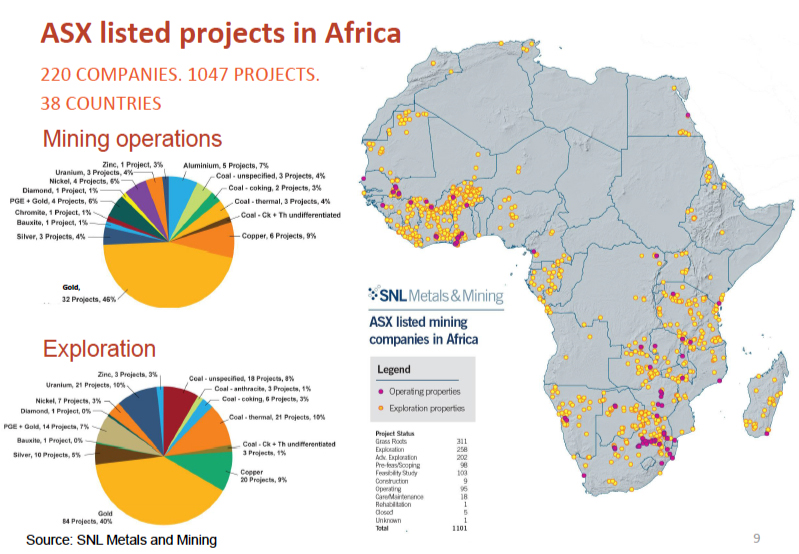
Tokyo’s urban sprawl. © Chris 73 / Wikimedia Commons
Asia’s thriving metropolises could provide the blueprints for Africa’s rapidly growing cities, and help the continent avoid the many pitfalls of urbanisation
Africa and Asia are both latecomers to urbanisation. While in all other regions more than 70% of people live in urban centres, in Africa and Asia it is less than half. But both continents are also marked by rapid urbanisation rates. Asian cities are growing at a rate of 1,5% a year, Africa’s 1,1%; millions are moving into overstretched cities every month.
Asia is home to the world’s largest and newest megacities – super metropolises with 10 million or more people – that have presented enormous urbanisation challenges. What has been learned along the way may help address development dilemmas facing Africa today.
Africa’s urban populations have been rapidly increasing and catching up with Asia (Table 1), with more residents competing for urban resources stretched to the limit. But with growing populations come new financial and social opportunities.
Urbanisation offers many opportunities for advancement, but in itself has not always guaranteed success. If ill-planned and managed, it becomes a barrier to development as people end up living in slums, lack basic sanitation and suffer high crime rates and environmental pollution. If urbanisation goes wrong, countries often do not get a second chance to seize the development opportunities missed.
Some inspiration on how to make urbanisation an engine of sustainable growth comes from the latest intergovernmental conference on housing and urbanisation, Habitat III, which took place in Quito, Ecuador, in October 2016. The conference’s main outcome was the adoption of the New Urban Agenda (NUA). The NUA does not consider urbanisation an obstacle to development, but rather a key development driver.
Well-planned urbanisation can boost economic growth. But cities must be smartly designed in order to be safe, inclusive, accessible and green. This holistic approach requires well-integrated planning instruments across sectors.
The NUA reaffirms the right to adequate housing and places itself in the context of the United Nations’ Sustainable Development Goals. The first target of Goal 11 (sustainable cities and communities) is to “ensure access, for all, to adequate, safe and affordable housing and basic services and upgrade slums”. It commits countries to promote affordable and sustainable housing and housing finance, and mixed-income developments to avoid segregation, stressing the need to adapt housing policies to the local context. It recognises different forms of tenure – such as co-housing and community land trusts – in Paragraph 107, and it explicitly encourages support for incremental housing and self-build schemes. The NUA stresses the need to promote not only home ownership, but also other types of tenure, such as co-housing.
Providing adequate and affordable housing is not the only challenge; good infrastructure – roads and highways, public transportation, rail, airports and ports – is vital too, but is typically beyond the means of most countries in Asia and Africa to fund publicly. The results are congestions that hamper the means to get labour efficiently to production, and production to markets. Public-private partnerships have been the recourse in many Asian countries, although the rate of return on infrastructure relies on the unpredictable level of fees and tolls that can be charged. Still, private investment is seeing profitable repayment in a matter of five-or-so years.
One solution to boost the rate of return on public works is to tax the positive spillover effects that result from improved infrastructure. Asia and Latin America have found that more efficient transportation typically attracts manufacturing to a region. It creates jobs and with that, demand for services, farmers and small businesses, and good education. The knock-on effect is a pool of qualified workers, enhancing productivity in the region. This greater economic activity also increases tax revenues. The Asian Development Bank Institute has proposed that governments could share a portion of these spillover revenues with the original investors, which would increase the overall rate of return for the project. Without returning a share of these spillover effects to the investors, many infrastructure projects are not as profitable and may never get off the ground.
Good, affordable housing is crucial. It has always been a delicate balance to strike between public and private sector interventions in the housing market. Today, governments in many low- and lower-middle income countries rely excessively on the market. In contrast to other markets, the private sector depends on government housing supply policies. Unclear land titles or a shortage of usable land constrain the supply of additional housing and lead to a surge in housing prices. As a result, low-income groups are priced out of the market. The government’s role in providing adequate and affordable housing starts by ensuring supply constraints are eliminated.
In Japan, after World War II, the government used a three pillar approach: establishing a government Housing Loan Corporation to facilitate housing construction; constructing rental houses for low-income groups; and providing a large supply of residential land. The restoration of the housing stock was achieved in the 1960s. Korea followed a similar strategy in the 1970s by expanding the land supply and increasing the provision of housing loans. But prices increased sharply in the late 1980s, so the government launched a “Two Million Housing Drive”. It has been relatively successful in containing price surges and avoiding real estate bubbles, which could become a concern for some cities in the People’s Republic of China.
The experiences of developed and emerging countries, such as Korea, provide numerous examples of the challenges and risks when designing policies to increase the affordability of housing. Africa’s rapid urbanisation makes housing policies a key concern for almost every local and central government. Urbanisation can only become an engine of economic growth and prosperity if urban areas provide affordable and quality housing options for all urban citizens.
But cities in Asia and Africa often struggle to provide sufficient, quality jobs. In Asia, small- and medium-sized enterprises (SMEs) account for a major share of employment and dominate the economy, especially in urban areas. Asian economies are often characterised as having bank-dominated financial systems and underdeveloped capital markets, in particular venture capital. Looking for new and decentralised financing methods for SMEs is crucial.
Hometown investment trust funds are a novel financial intermediation adopted as a national strategy in Japan. They give credit ratings to SMEs, limiting risk to the lender and giving SMEs access to capital. By employing two statistical analysis techniques – principal components analysis and cluster analysis – and applying various financial variables to 1,363 SMEs in Asia, Japan found banks could provide loans to group SME customers based on financial health, adjust interest rates on loans, and set lending ceilings for each group. This idea could help Africa as well.
Although the soundness of the banking system has improved significantly since the 1997–98 Asian financial crisis banks have been cautious about lending to SMEs, even though they account for a large share of economic activity. Secure banking is also a challenge for most of Africa too.
Start-up companies, in particular, are finding it increasingly difficult to borrow money from banks because of stricter Basel capital requirements. Riskier SMEs without a track record also face difficulty in borrowing money. A credit rating scheme that scores the financial health of SMEs could help banks lend money in a more rational way, and reduce risk. Credit rating indexes, such as Standard & Poor’s, rate large enterprises. By looking at a large enterprise’s credit rating, banks can decide how much to lend and at what rate. For SMEs, the issue is more complicated as there are no comparable ratings.
If similar systems could be established in other parts of Asia, and Africa – accumulate and analyse credit risk data, and accurately measure each SME’s credit risk – SMEs could raise funds from the banks more easily and gain access to the debt market by securitising their claims.
Latecomers to urbanisation like Asia and Africa find the keys to success invariably depend on investment in education; a relatively simple and fast shift from agriculture to manufacturing to get people off the land and improve the quality of their lives; relatively high labour mobility; and transportation interconnectivity. These bring about a substantive improvement in personal well-being as citizens exit poverty, and are able to access improved health and education services.
Making urbanisation inclusive is another key concern. In many cases income inequality increases as cities grow in population, which has a detrimental effect on various development outcomes, in particular health. When income inequality declines key health outcomes, such as child mortality and life expectancy, improve substantially. Overwhelming scientific evidence for a causal relationship between income inequality and health shows that wider income differences lead to worse health outcomes.
Child mortality is a good indicator of the performance of health systems around the world and tends to be higher in countries where attendance by healthcare professionals at birth is low, or if the level of infectious diseases is high due to a lack of hygiene or overcrowded living conditions. High child mortality can also indicate a lack of access to life-saving drugs.
Similarly, while longevity is determined by genetic predisposition there are environmental and medical factors at play. Income inequality can result in poor living conditions and social as well as psychological stress. Higher income inequality can lead to lower income groups not being able to pay for adequate or sufficient preventive or curative healthcare, or even force them to forego healthcare.
Asia has found that just a small rise in income for poor households can have a greater impact on health than an equivalent rise in income for the rich. Infant mortality rates tend to fall as income distribution becomes more equal. Child mortality is particularly high in Nigeria and South Africa, which also have highly unequal income distributions. Egypt and several Asian countries, especially Japan and Korea, have low levels of income inequality and lower rates of child mortality.
Lower income inequality is associated with higher life expectancy. It is highest in Japan, the country with the most equal income distribution. Life expectancy is also determined by gross domestic product (GDP) per capita, as higher income typically allows for better healthcare. This relationship does not always hold. The United States has the highest GDP per capita in the G20 group, but ranks ninth in terms of life expectancy. Its relatively unequal income distribution might in part explain this weak performance.
Achieving inclusive growth, as advocated by the G20, would bring considerable health benefits. A fall in child mortality translates into a concrete economic benefit for society. Reducing inequality can have mutually reinforcing outcomes; lowering inequality results in better health, which leads to more sustainable growth.
Income inequality is a social policy issue each city must deal with, and adjustment to take advantage of trade opportunities leads to improved welfare, but of further importance is broader structural changes to deal with rapid urbanisation and the speed of technological change.
Asia has already faced many of the challenges in relatively similar short time spans. Many Asian countries made mistakes along the way – mostly fixed them – and are now each powerhouses in their own right. Asia understood early on that urbanisation had great potential to accelerate economic growth. Several Asian countries, most recently China, have deliberately encouraged residents in rural areas to give up farming and move to the cities to work in more productive manufacturing industries. This move not only increased the economic output, but also triggered new demand for housing and other commodities, which eventually reinforced growth.
But caution is necessary as even though Africa and Asia face similar problems, one-size-fits-all plans, best practice solutions and universal agendas to transplant development ideas and institutions from one context to another do not always succeed, despite the best intentions.
Achieving sustainable urban development that promotes economic growth will become one of the most pressing questions policymakers will face in Africa in decades to come. Nevertheless, promising approaches, tried and tested in Asia, are at hand.















